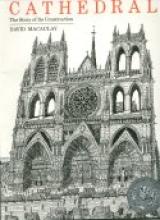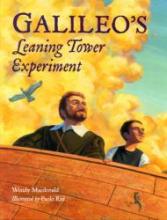Review:
An interesting, fully illustrated (with pen and ink drawings) story of the construction of a Medieval Cathedral. The cathedral in the book and the details of the story are fictional, but are based on details of what we know about the construction of real-life cathedrals. (Among other reasons, this technique makes sense because there probably aren't enough details known about the construction of any one Cathedral to make a book of this sort). In addition to scientific, artistic and architectural details about how flying buttresses work and other technical information, the author provides a glimpse into this significant aspect of Medieval life - how dedicated the townspeople were to the project, how many of those who started the project did not live to its completion (because it took so many years to build), difficulties that would come up in the midst of the construction, etc.
From what he has portrayed in this book, I believe that David Macaulay is trying to be fair to the Church. Unfortunately, there is one significant error with regard to Church teaching - on the first page. The problematic portion reads: "A new cathedral would offer a worthy resting place for the sacred remains of Saint Germain, a knight of the First Crusade whose skull and forefinger had later been sent back from Constantinople by Louis IX. Such relics as these were worshipped by people throughout Europe." I don't think that this error makes the book unusable, but parents should be certain that their children understand that Catholics are not permitted to worship saints relics, statues, images or any other thing or mere human. Worship is reserved for God alone (the Father, Son and Holy Spirit). We pray to the Saints and to Our Lady only to ask them to pray and intercede for us because they are so close to God. Statues, images, relics and other sacramentals are not worshipped, but reverenced and venerated (treated with great respect, cherished and even devoutly kissed - even as we may kiss another person or the image of a dead beloved one) because they remind us of God or those who are close to God.


